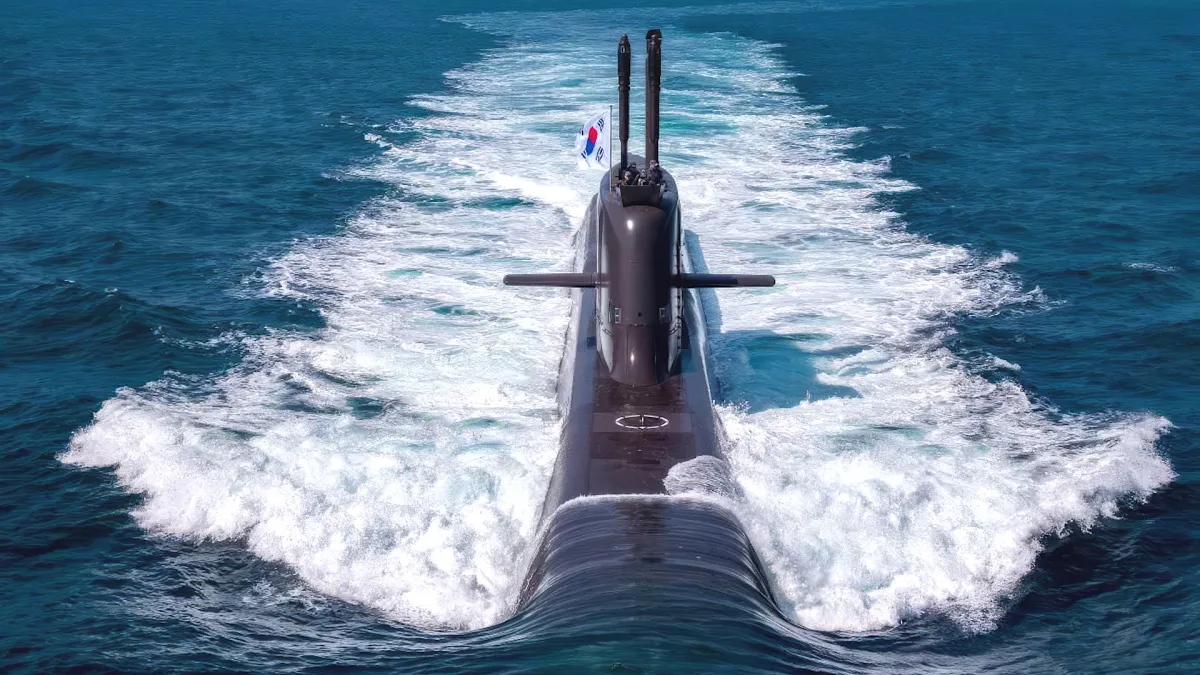South Korea Advances Its Defense Ambitions with U.S. Backing
South Korea has moved forward with one of its most significant military milestones. This progress follows the finalization of an agreement with the United States that authorizes the construction of nuclear-powered attack submarines. The decision comes amid rising security concerns throughout East Asia, particularly as North Korea accelerates its weapons programs. Additionally, China expands its presence in nearby waters.
The new pact also strengthens Seoul’s broader economic ties with Washington. This follows a tariff reduction deal that lowered duties to 15%. South Korea committed to invest $350 billion in U.S. industries. The investment includes $200 billion in cash and $150 billion in shipbuilding. As South Korea seeks to enhance its naval capabilities, many defense analysts continue monitoring regional developments through platforms such as Defense.gov. They aim to better understand how this agreement will influence U.S. military partnerships across the Pacific.
The approval from Washington includes cooperation on sourcing nuclear fuel. This fuel is a critical component for vessels designed to operate faster and farther than South Korea’s current diesel-powered fleet. These new submarines would place Seoul among a small group of nations with such advanced technology. This development reinforces South Korea’s status as a strategic actor in the region.
Why Nuclear Submarines Matter in the Regional Power Balance
The decision to pursue nuclear submarines is rooted in South Korea’s concern over North Korea’s advancing weapons program. Pyongyang has revealed that it is also working on nuclear-powered submarines. Intelligence analysts expect them to be operational within the next few years. For South Korea’s defense leadership, the stealth and endurance of nuclear-powered vessels represent a critical deterrent capability. Government officials have openly stated that these submarines are essential for counteracting threats from the North. North Korea’s nuclear arsenal is estimated at roughly 50 warheads.
As regional tensions intensify, South Korea’s pursuit of stronger naval assets aligns with deeper international collaboration. Observers tracking Asia-Pacific political shifts through resources like AsiaPacificFoundation.ca highlight that the region is experiencing an unprecedented era of military modernization. South Korea also operates one of the world’s most advanced civilian nuclear sectors. However, its ability to enrich or reprocess uranium remains restricted under U.S. agreements. Nonetheless, the new submarine partnership marks a substantial evolution. It shows how Seoul intends to defend its maritime territory and respond to long-standing security threats.
Implications for the United States, China, and Future Regional Diplomacy
For the United States, supporting South Korea’s nuclear-powered submarine program fits into a broader strategy. This strategy aims at countering China’s growing influence and North Korea’s nuclear posture. Washington benefits from Seoul’s increasing defense commitments. Expanded military investment strengthens the allied presence in a region where geopolitical tensions are rapidly escalating.
China, meanwhile, is expected to view the agreement with deep concern, particularly as its naval forces increase operations near South Korea’s maritime borders. Analysts following geopolitical reactions through platforms like Brookings.edu suggest that Beijing may intensify diplomatic pressure in response to the submarine collaboration. The next major step for both nations involves updating their nuclear cooperation framework. This step paves the way for the U.S. to provide the fuel required for submarine deployment.
While some political leaders claim the vessels could be built at a U.S. shipyard owned by South Korean conglomerate Hanwha, defense specialists emphasize that South Korea’s domestic infrastructure offers greater speed and efficiency for such construction. As policymakers analyze the long-term strategic impacts, global observers tracking defense economics through CSIS.org note that this agreement could redefine naval power dynamics in East Asia for decades to come.







